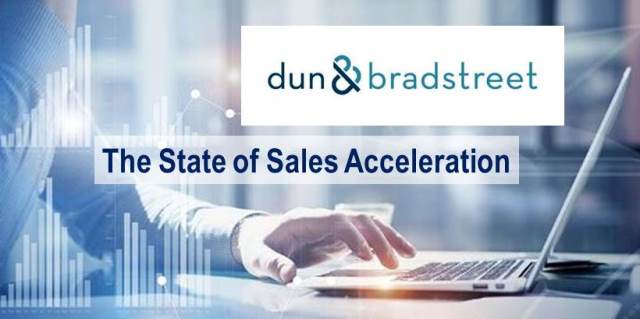 Lengthy research cycles and lack of insight on target audience stalls sales process, according to The State of Sales Acceleration report
Lengthy research cycles and lack of insight on target audience stalls sales process, according to The State of Sales Acceleration report
A survey released recently from Dun & Bradstreet has shown that, in an era of data-driven sales and marketing, teams continue to struggle to reach the right audiences, convert leads and prove return-on-investment (ROI). The company’s first annual State of Sales Acceleration report separately surveyed over 300 business-to-business (B2B) sales and marketing professionals and 300 B2B technology buyers to discover where internal and external disconnects lie. The survey also unveiled how teams are incorporating data-driven tactics and new technologies into their daily workflows.
An overwhelming majority (92 percent) of sales and marketers say they recognize the importance of having the right data to understand each prospect’s needs, but they aren’t seeing the results they had hoped. As a result, teams have been dealing with long sales cycles and disconnected sales processes. An average marketing campaign analyzed in the survey had a win rate of just 17 percent.
 “As sales and marketing teams converge, it’s critical for them to have accurate and aligned data about their target audiences to help convert any lead into a paying customer more quickly,” said Rishi Dave, Chief Marketing Officer at Dun & Bradstreet. “B2B buying is a longer process that is likely to begin before a salesperson is even involved. Sales acceleration principles will help sales and marketing teams surface actionable insights and connected buying signals, which help convert prospects into customers and increase ROI.”
“As sales and marketing teams converge, it’s critical for them to have accurate and aligned data about their target audiences to help convert any lead into a paying customer more quickly,” said Rishi Dave, Chief Marketing Officer at Dun & Bradstreet. “B2B buying is a longer process that is likely to begin before a salesperson is even involved. Sales acceleration principles will help sales and marketing teams surface actionable insights and connected buying signals, which help convert prospects into customers and increase ROI.”
Marketers’ Woes
Marketers face their own frustrations while working alongside sales teams, saying their three biggest challenges involve understanding who their exact target audience is, ensuring they have complete and relevant data and measuring the success of their campaigns. Marketing teams have begun addressing these issues by utilizing new tactics that require robust data and a deep level of insights.
For instance, 58 percent are currently using account-based marketing with another 27 percent planning to start using it in the next six months. Programmatic advertising is also popular with 41 percent of respondents reporting already using it and another 33 percent planning to implement it in the next six months. Additionally, while only 26 percent are currently using artificial intelligence, 22 percent are planning to adopt it within six months.
B2B Technology Buyers’ Pain
Despite the proliferation of tools and analytics designed to target B2B buyers, only half (51 percent) of buyers said they have seen an improvement in sales and marketing communications over the last few years. Nearly half (48 percent) of surveyed buyers still believe the communications they receive are not at all relevant to their role, indicating a need for sellers to connect offline and online customer data, offer more relevant communications and accelerate the buying journey.
Sales Disconnect
According to the salespeople surveyed, the average salesperson spends over two hours (128 minutes) looking into each prospect before contacting them, leaving little time to actually reach out to new prospects and sell. Consequently, nearly a quarter (24 percent) of salespeople said they don’t have enough time to research potential customers.
“If sales teams have more detailed buyer information at their disposal, they can spend more time on revenue-focused activities,” added Dave. “By using data-driven sales acceleration tools that incorporate real-time, accurate data with buying signals, marketing and sales teams will have access to more relevant information that’s connected, insightful and actionable.”
To download The State of Sales Acceleration 2017 report, please visit: dnb.com/marketing/media/state-of-sales-acceleration.html.
Source: Dun & Bradstreet Press Release






















